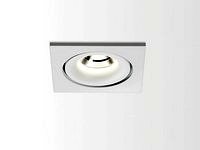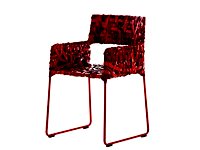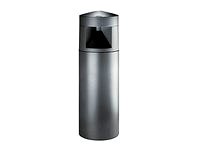The first activity required consists of assigning a name to the project, along with
general descriptive information, which will permit to re-use the same project without
problems, even after a long time. The next step is to define the building’s structure
and the topology required by the home automation project. The devices are looked up
in the database, copied into the structure and assigned a unique id, corresponding to
their physical address. At this point, each device may be configured independently, by
setting a series of parameters, which vary according to the function to be performed.
For example, independent function can be attributed to each different channel of
a single push-button command, e.g. switching on or off an electrical appliance, a
dimmer for a light source or the opening/closing control for a roll-up shutter. The
next step is to define the interaction between multiple devices; unlike traditional
installations, where this is achieved by physically laying cables, in a home automation
system this action is performed by means of virtual connections generated by the
ETS® program.
The Ekinex® home and buildings automation system was developed in accordance
with the KNX open standard; therefore, the planning and the commissioning of a
system as well as the configuration of its devices can be carried out easily by means
of a PC and the ETS® software. The software allows to program Ekinex® devices,
as well as thousands of other interoperable devices produced by companies which
are members of KNX Association. All is needed to use Ekinex® devices in a system
project, is the download from the www.ekinex.com website of either the application
programs general file, the Ekinex® product database containing software for all
devices, or the single, specific-application program as necessary. After importing
product data into the internal ETS® database, one may start laying out the home
automation project.
Projecting, configuration
and commissioning
TECHNICAL SECTION
In order to become KNX Partner, one must withstand a 40-hours theory
and practise exam at a KNX-certified Training Centre. A complete list of
KNX Partner is available on the website of KNX Association (www.knx.org).
It is then possible to upload the application program to each device, thereby including
all the settings required to perform the expected function within the system. ETS®
also has utility functions for diagnoses and error search; for instance, it is possible
to verify physical addresses and to check the status of each single devices on the
connected bus. Lastly, the program can produce the necessary project documentation
for the end user, so that it may be further expanded and adapted in the future. The
constant attention of KNX towards the world of professionals developed into a wide
offer of training courses. Courses for experts have been offered for years in numerous
countries and KNX constantly monitors the activity of all certified training centres,
where it is possible to become KNX Partners. The professional role of a KNX Partner
is to guarantee a high level of system expertise in order to achieve the best results.
Among KNX Partners are designers, installers and system integrators, who offer
expert advice to plan, install, run and maintain a KNX-standard control system for
homes and buildings.
ETS® (Engineering Tool Software) is manufacturer-independent software.
produced and marketed by KNX Association (www.knx.org)
TECHNICAL022EN
320
321
03
Introduction
18
Wall-mount devices
229
DIN-Rail mount modules
297
Supervision
311
Tools
315
Sales kit
321
Technical section
331
General terms of sale
335
General index







